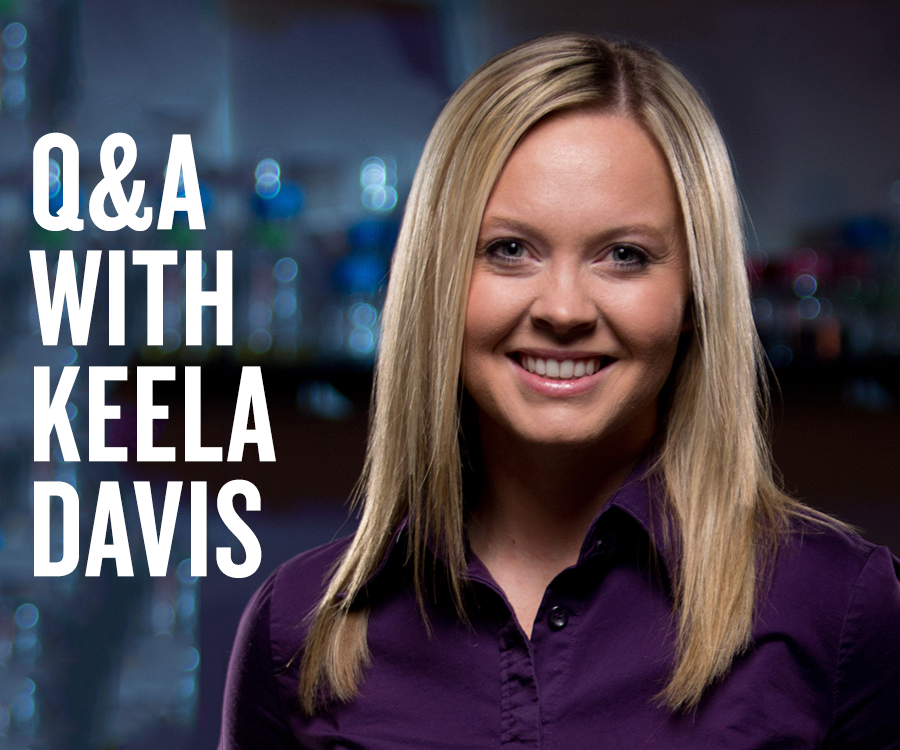
Strategy
Q&A with Keela Davis
Restructure is part of the business game, but Keela Davis learned that a truly successful restructure comes down to communicating shared goals with your team and valuing the work that they do.
By Rose Marthis
Jul 2016

When the team at Mercy Research realized its departments were scattered and work was overlapping, they saw an opportunity to unify and increase efficiency to provide a better service to patients. Keela Davis, executive director of Mercy Research, takes us through the restructure of the department and shares her tips for how to navigate your business and employees through the same hurdles.
Biz 417: How did you first start the restructuring process?
Keela Davis: We started by evaluating our current research operations throughout Mercy. We spent about six to eight months doing an initial assessment, conducted a series of conversations and developed business plans to determine if it made sense to unify all of our programs.
Biz: How important is clear communication when going through a restructure?
KD: Change is difficult for most, particularly unknown change. In a restructuring process not all of the decisions are made up front, so being as clear and transparent as possible about how jobs are affected day-to-day is important. Give the same presentation over and over. Keep sending the message and continually connect it to how this will further the mission of the organization. It may seem like common sense, but it’s based on your perspective. Find their frame and connect the process and mission to their perspective.
Biz: What other tips do you have for businesses going through a restructure?
KD: It’s easy to identify where to do things better, faster and more efficiently and have a larger impact. A successful restructure comes down to people. You want to make sure the leadership understands the why and the tentative how and that they’re ready to support it. You are asking people to change what they do on a regular basis to try to get a different outcome. People will not be able to put in the energy and brainpower that’s needed to make that change if they don’t feel valued and fully understand why things are changing. Focusing on easing people into change is very important. Talk with, listen to and learn from people all the way through it.
Biz: How did you identify you needed to restructure?
KD: Mercy has facilities over a seven-state area with research currently in four states in a number of hospitals and clinics. Most of those groups hadn’t been connected but were doing the same type of research. Many efforts were being duplicated across the system, and too much time and energy was focused on a small group of patients or one geographical location. We want to offer this type of research to any patient in the Mercy network, no matter where they live. We also saw that companies sponsoring clinical trials are looking to streamline site identification and patient enrollment. From the healthcare side, if we can help streamline the drug evaluation and get medications to market faster, that will benefit our patients and reduce costs.
Biz: Once a business owner decides to proceed with a restructure, what are the next steps?
KD: You determine the structure of the restructure. We first designated our executive leadership group. In our organization, we have physician leads for each region throughout Mercy as well as an executive director. That team was selected and took time to really look at what’s going on and start putting tentative plans together. We also assembled a steering committee. We had executive leaders throughout Mercy who were a part of a team that helped make the decisions during the transition phases. It involved legal, compliance, chief medical officers, chief business leaders, marketing and human resources—all the key functions that come into play in an organization. Leaders were dedicated to making decisions and meeting on a regular basis. That group spent time focusing on immediate priorities, providing clear communication and identifying hurdles within the organization. They were leaders that were able to mitigate and work through complicated issues. This approach has made the decision-making throughout the transition move very quickly.
Biz: What sort of unexpected obstacles did you run into, and how did you overcome those?
KD: There are many obstacles in a major change and restructure. One we didn’t anticipate is that during a lot of change, you will have turnover in staff. Be able to manage that and know that some of the turnover may force the changes more quickly than what you’re ready for. Be ready to hire into the new vision and structure probably earlier than you originally anticipated.
Biz: How do you handle resistance to change?
KD: It’s going to be hard. Your job is to try to help, but just because there is some dissatisfaction with change doesn’t mean you have to stop. I would advise having a group, or in our case a steering committee, that can continue to assess through those critical points and is willing to keep marching forward despite resistance.












